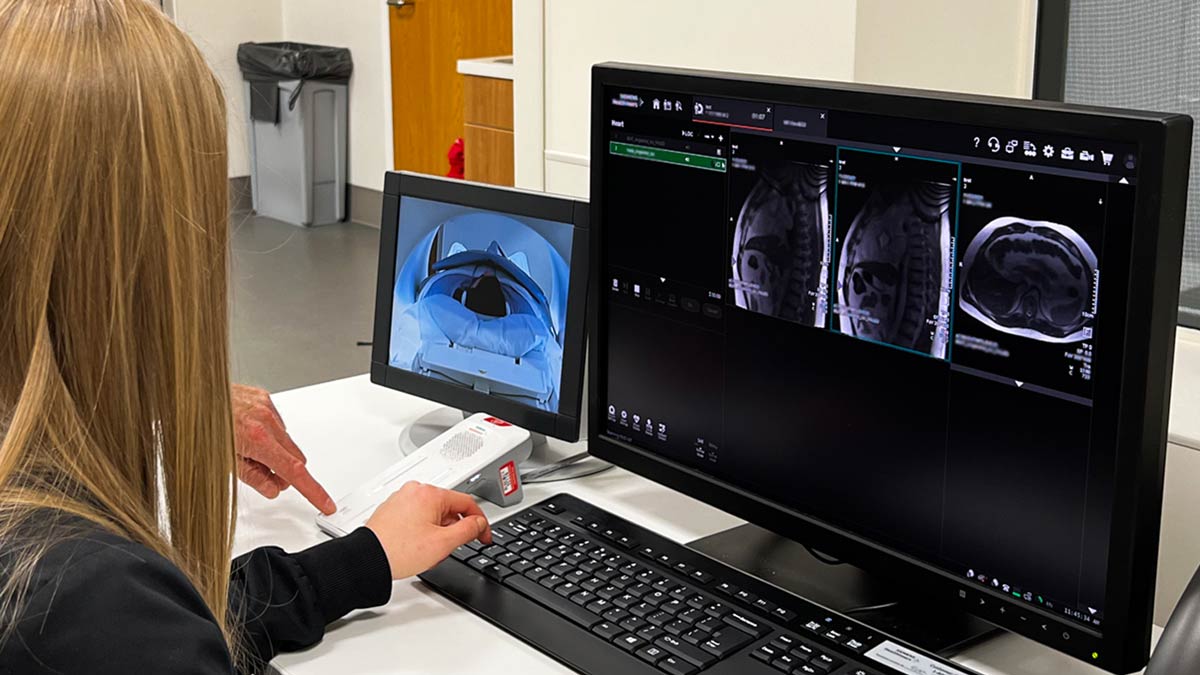

The Ohio State University Wexner Medical Center recently became the first in the nation to install an FDA-approved 0.55T MRI machine for clinical use. At the forefront of cardiac imaging, a talented group of physicians and researchers are on a mission to translate low-field MRI technology into high impact for the patients they treat.
“One of my career goals is to make cardiac MRI more mainstream, and there is no better way to achieve this goal than to advance low-field MRI,” says Orlando Simonetti, PhD, professor of cardiovascular medicine at The Ohio State University College of Medicine.
“We have a unique opportunity to knock down barriers to access for many more patients in the years to come,” Simonetti says.
Historically, low-field MRI machines like the 0.55T have failed to gain traction because of the noise that comes from capturing the motion of a beating heart. “You can think of noise like snowflakes on the TV screen, obscuring the underlying picture,” explains Simonetti. By devising a way to suppress that noise and produce clearer images at a lower field, Simonetti and Rizwan Ahmad, PhD, assistant professor of biomedical engineering at Ohio State, made low-field MRI technology viable.
In partnership with Siemens Healthineers, the team led by Simonetti and Ahmad leveraged their technological breakthrough to develop a 0.55T MRI machine that provides substantial clinical benefits for providers and patients:
Cost — The 0.55T costs roughly half of what Ohio State’s existing 1.5T MRI machine does because of its lighter weight and lower density. Unlike higher field MRIs, the 0.55T does not require special construction to build a room that can hold its 3.5-ton weight. Its new DryCool technology also provides a helium-free infrastructure that reduces operating costs.
Space — The 0.55T’s 80-centimeter opening and 485-pound weight tolerance provides access to obese patients who are unable to use higher-field machines with smaller openings. The space also allows for a more relaxing, sedation-free experience for patients who experience claustrophobia.
Device Compatibility — Patients with medical devices like pacemakers and defibrillators are typically poor candidates for MRI because of the image distortion caused by the interaction of their metal devices and the MRI magnet. The 0.55T overcomes this distortion and produces clear, usable images for patients with devices. It’s also useful for procedures such as catheterization, which can only be performed with low-field MRI because of the risk of wires overheating under a high-field magnet.
Lung Imaging Capability — At higher field, it’s difficult to evaluate lung structure and function because of the low density of the lungs. Low-field MRI, in contrast, has the capacity to create clearer, more precise lung images.
With the addition of new 0.55T and 3T machines to its existing 1.5T, Ohio State will boast three machines dedicated to cardiac imaging, an exceedingly rare asset.
“By having three different field strengths, we can better tailor treatment to each patient,” says Simonetti. “Through this technology, we’re making great strides in taking cardiac imaging mainstream.”






